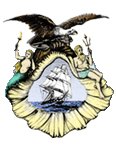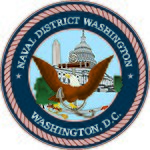Virginia Avenue Tunnel

The Virginia Avenue Tunnel is a railroad tunnel in Washington, D.C. owned by CSX Transportation. It is part of the CSX RF&P Subdivision and serves freight trains along the eastern seaboard routes, providing a bypass around Union Station. The double-tracked tunnel is located under Virginia Avenue SE, from 11th Street SE to 2nd Street SE. The eastern portal connects to the Anacostia Railroad Bridge and the CSX Capital Subdivision. At the western end the RF&P Sub runs to the Long Bridge into Virginia.CSX rebuilt the tunnel to replace its deteriorated structure and increase capacity to allow double-stacked containers to pass through. Construction began in 2015 and the project completed in 2018.
Excerpt from the Wikipedia article Virginia Avenue Tunnel (License: CC BY-SA 3.0, Authors, Images).Virginia Avenue Tunnel
Southeast Freeway, Washington
Geographical coordinates (GPS) Address Nearby Places Show on map
Geographical coordinates (GPS)
| Latitude | Longitude |
|---|---|
| N 38.877399 ° | E -76.9911 ° |
Address
Southeast Freeway
Southeast Freeway
20388 Washington
District of Columbia, United States
Open on Google Maps









